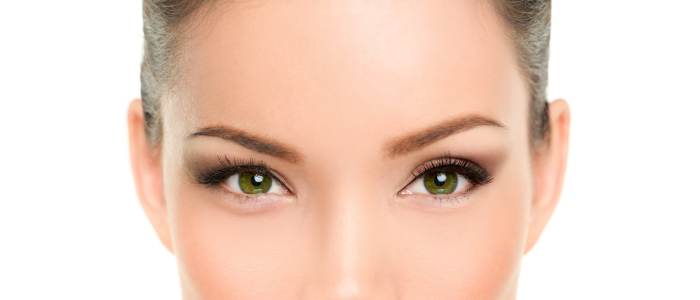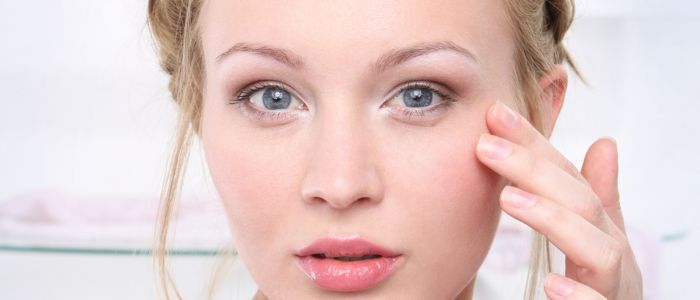
Table of Contents
- What Can Be Done to Correct Saggy Eyelids
- Causes of Saggy Eyelids
- Natural Ageing Process
- Genetic Factors
- Lifestyle and Environmental Factors
- Non-Surgical Treatment Options for Saggy Eyelids
- Lifestyle Changes
- Skincare Treatments
- Temporary Solutions
- Surgical Treatment Options for Saggy Eyelids
- Blepharoplasty (Eyelid Surgery)
- What to Consider Before Choosing a Treatment for Saggy Eyelids
- FAQs about Saggy Eyelids
- Further Reading about Eyelid Surgery with Chester Consultant Plastic Surgeon Anca Breahna
What Can Be Done to Correct Saggy Eyelids
Saggy eyelids, a common concern that affects many individuals as they age, involve the drooping of the upper eyelids or the bagginess under the eyes. This condition can be more than just a cosmetic issue; it can also impair vision and affect daily activities. The reasons behind saggy eyelids range from natural ageing processes to genetic predispositions, with lifestyle and environmental factors also playing a significant role.
For some, saggy eyelids are an inherited trait, showing up early in life and progressing with age. Environmental factors, such as prolonged exposure to the sun, can exacerbate these changes, speeding up the ageing process of the skin around the eyes. Additionally, habits like smoking can contribute to premature skin ageing, making saggy eyelids more prominent.
The desire to address saggy eyelids often stems from more than the pursuit of a youthful appearance. For many, improving the look of their eyelids can lead to enhanced vision and a boost in self-confidence. It’s about reclaiming one’s appearance and, by extension, a sense of identity that feels true to how they feel inside.
In this blog, Chester Consultant Plastic Surgeon Anca Breahna will explore both non-surgical and surgical treatments, empowering you to make informed decisions about your eye health and aesthetics.
Causes of Saggy Eyelids
Saggy eyelids are a common condition that can significantly impact an individual’s appearance and, in some cases, their vision. While often associated with the ageing process, several factors contribute to the development of saggy eyelids, ranging from genetic predispositions to lifestyle influences.
Natural Ageing Process
The most prominent factor behind saggy eyelids is the natural ageing process. As we age, our skin loses collagen and elastin, the proteins responsible for its firmness and elasticity. This loss results in the skin becoming looser and more prone to gravity’s effects, leading to the drooping of the upper eyelids and the formation of bags under the eyes. Additionally, the muscles around the eyes weaken over time, exacerbating the sagging appearance.
Genetic Factors
Genetics also play a significant role in the development of saggy eyelids. Some individuals are genetically predisposed to have less collagen and elastin in their skin or to experience a more rapid decline in these proteins’ production. This predisposition can lead to earlier or more pronounced sagging around the eyes, making genetic factors a crucial consideration in understanding and addressing this condition.
Lifestyle and Environmental Factors
Lifestyle and environmental factors can accelerate the ageing process of the skin, including the delicate area around the eyes. Prolonged sun exposure is a significant contributor, as ultraviolet (UV) rays break down collagen and elastin more quickly. Smoking is another critical factor; it reduces blood flow to the skin, depriving it of essential nutrients and oxygen, leading to premature ageing and increased sagging.
Other lifestyle factors include poor nutrition, lack of sleep, and high stress, all of which can affect the skin’s health and appearance. A diet low in antioxidants and essential fatty acids can weaken the skin’s ability to repair itself, while insufficient sleep and high stress levels can lead to inflammation and a breakdown of skin structure, further contributing to saggy eyelids.
Non-Surgical Treatment Options for Saggy Eyelids
For those seeking to address saggy eyelids without undergoing surgery, several non-surgical treatment options can offer improvements. These treatments range from lifestyle modifications and skincare regimens to temporary solutions that can help reduce the appearance of sagging:
Lifestyle Changes
Preventive measures play a significant role in slowing the progression of saggy eyelids. Protecting the skin from sun damage is crucial; wearing sunglasses and applying sunscreen around the eyes can help preserve collagen and elastin. Quitting smoking and adopting a healthy diet rich in antioxidants can improve skin health and resilience. Regular exercise and sufficient sleep also contribute to overall skin health, potentially reducing the severity of saggy eyelids.
Skincare Treatments
A targeted skincare regimen can make a noticeable difference in the appearance of saggy eyelids. Products containing retinol, peptides, and antioxidants can stimulate collagen production, improve skin elasticity, and reduce fine lines and wrinkles. Eye creams specifically formulated for the delicate skin around the eyes can help tighten and lift the area, reducing the appearance of sagging.
Applying these products consistently as part of a daily skincare routine can gradually improve the skin’s texture and firmness. While the results may not be as dramatic as surgical options, they can nonetheless provide a non-invasive way to address saggy eyelids and rejuvenate the eye area.
Temporary Solutions
For those looking for immediate, though temporary, improvements, some options can help minimise the appearance of saggy eyelids. Cosmetic products like concealers and eye-lift tapes can camouflage sagging and create the illusion of tighter, more lifted eyelids. These solutions are particularly appealing for special occasions or as a short-term fix while considering more permanent treatments.
Eyelid tapes and strips, when applied correctly, can physically lift the eyelid skin, offering a non-surgical eyelid lift. These products are widely available and can be a cost-effective way to achieve a more youthful appearance around the eyes. However, it’s important to note that these solutions do not address the underlying causes of saggy eyelids and offer only temporary results.
Surgical Treatment Options for Saggy Eyelids
Saggy eyelids not only affect one’s appearance but can also impair vision and reduce quality of life. While non-surgical treatments offer temporary solutions, surgical options provide a more permanent resolution to this condition. Among these, blepharoplasty, or eyelid surgery, stands out as the most effective procedure to correct saggy eyelids.
Blepharoplasty (Eyelid Surgery)
Blepharoplasty is a surgical procedure designed to remove excess skin, muscle, and sometimes fat from the upper and lower eyelids. This operation can improve the appearance of droopy eyelids and puffy eye bags, leading to a more youthful and refreshed look. It can also enhance peripheral vision for those whose saggy upper eyelids obstruct their sight.
Good candidates for blepharoplasty are individuals in good overall health, without any serious eye conditions, and who have realistic expectations about the outcomes of the surgery. It’s essential for patients to discuss their medical history, including any eye conditions or surgeries, with Anca during the consultation.
The procedure is typically performed on an outpatient basis, using local anaesthesia with sedation or general anaesthesia. For the upper eyelids, Anca makes incisions along the fold of the eyelid to remove or reposition fat deposits, tighten muscles, and remove excess skin. For the lower eyelids, the incision can be made just below the lash line or inside the eyelid, a technique known as a transconjunctival approach, which is often used when removing or repositioning fat without removing excess skin.
Recovery from blepharoplasty can take several weeks, with patients often experiencing bruising and swelling. Most can return to normal activities within 10 to 14 days, but complete healing and the full effects of the surgery may not be visible for several months. The results of eyelid surgery are generally long-lasting, giving a more rested and alert appearance.
In some cases, patients may opt for additional procedures alongside blepharoplasty to enhance their overall appearance further. A brow lift, for example, can address sagging eyebrows and forehead skin, complementing the effects of eyelid surgery. Similarly, facelifts and skin resurfacing techniques can improve the skin’s texture and firmness, offering a more comprehensive facial rejuvenation.
What to Consider Before Choosing a Treatment for Saggy Eyelids
Deciding on the best treatment for saggy eyelids involves careful consideration of various factors, including the severity of the condition, the desired outcome, and the individual’s health status. Consulting with Anca is the first step in exploring treatment options and making an informed decision.
A consultation with Anca is essential to determine the most appropriate treatment for saggy eyelids. During this meeting, Anca will evaluate the patient’s eyelids, discuss their aesthetic goals, and review their medical history. This conversation is an opportunity for patients to ask questions, express their concerns, and learn about the risks and benefits of surgical and non-surgical treatments.
Every medical procedure carries some risk, and it’s important for patients to understand these risks before proceeding with treatment. Blepharoplasty, while generally safe, can result in complications such as infection, bleeding, or asymmetry. Patients should also have realistic expectations about the results of surgery. While blepharoplasty can significantly improve the appearance of the eyes and the face, it may not achieve perfection or stop the ageing process.
FAQs about Saggy Eyelids

How do I know if I need surgery for my saggy eyelids or if non-surgical options are enough?
The need for surgery versus non-surgical treatment depends on the severity of the sagging, your aesthetic goals, and whether the condition affects your vision. Non-surgical options can be effective for mild to moderate sagging and are a good starting point for those hesitant about surgery. However, if the sagging is significant, affecting your vision, or if you desire a more dramatic and long-lasting improvement, surgery might be the recommended option. A consultation with Anca can help determine the most suitable path for you.
Can exercises for the eyes and eyelids prevent or reduce saggy eyelids?
While certain exercises claim to strengthen the muscles around the eyes, there is limited scientific evidence to suggest that they can prevent or significantly reduce saggy eyelids. The primary causes of saggy eyelids, such as the natural ageing process and genetic factors, are not something that exercises can reverse. But maintaining a healthy lifestyle can contribute to overall skin health and potentially slow the progression of sagging.
Are there any risks associated with waiting too long to address saggy eyelids?
Delaying treatment for saggy eyelids, especially when they impair vision, can lead to functional problems such as difficulty reading, driving, or performing other visual tasks. Moreover, severe sagging can contribute to eye strain and headaches as you unconsciously strain to lift your eyelids. From a cosmetic standpoint, earlier intervention may facilitate easier correction and potentially more satisfying outcomes.
How long do the results of eyelid surgery last?
The results of eyelid surgery are considered long-lasting, with many patients enjoying the benefits for 10 years or more. It’s important to remember that surgery does not halt the ageing process. Over time, natural ageing and environmental factors may lead to some degree of sagging again. Maintaining a healthy lifestyle and following a good skincare regimen can help prolong the results.
Can eyelid surgery be repeated if saggy eyelids reoccur years later?
Yes, eyelid surgery can be repeated, but the need for revision or additional surgery is relatively rare. If sagging recurs or if the initial results were not as expected, a secondary procedure might be considered. The feasibility of a repeat surgery depends on individual circumstances, including the amount of residual skin and the patient’s overall health. Anca can assess whether a second surgery is advisable and what can be achieved with it.
Medical References about Saggy Eyelids
- Reasons for Droopy Eyelids – WebMD
- Ptosis (Droopy Eyelid): Causes & Treatment – Cleveland Clinic
- Droopy eyelid (ptosis): Causes, risk factors, and treatment – Medical News Today
- 7 Common questions about upper eyelid surgery – Mayo Clinic
- Intrinsic and extrinsic risk factors for sagging eyelids
Further Reading about Eyelid Surgery with Chester Consultant Plastic Surgeon Anca Breahna
- Read more about Recovery after Eyelid Surgery
- Read more about What Are Hooded Eyelids?
- Read more about When Can I Exercise after Eyelid Surgery
- Read more about Options for Eye Bag Surgery
- Read more about Beginners Guide to Eyelid Surgery
- Read more about Plastic Surgery for Women in UK
- Read more about Causes and Treatments for Eyelid Ptosis
- Read more about Eyelid Surgery in Your 30s, 40s, 50s And 60s
- Read more about Can Eye Bags Go Away?
- Read more about Eyelid Surgery FAQs







